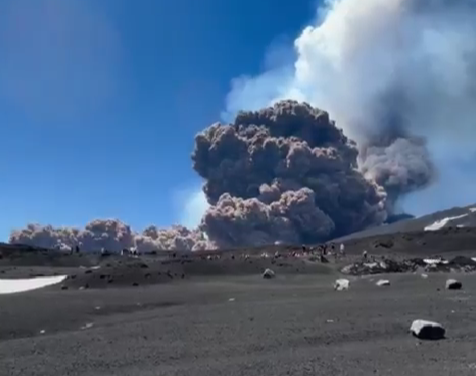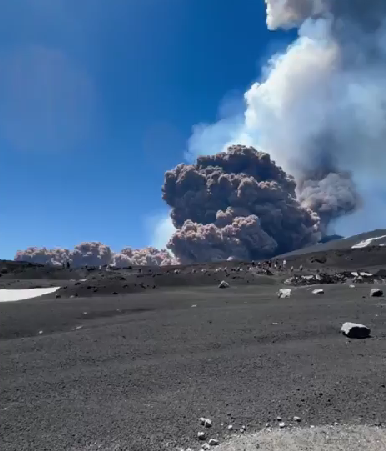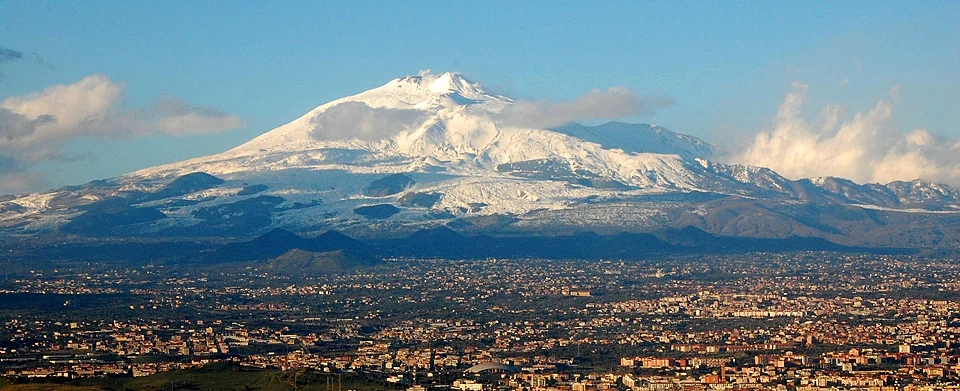Mount Etna’s Explosive Eruption Sends Tourists Fleeing to Save Their Lives

Standing on a mountain, snapping photos of a stunning view, when suddenly the ground shakes, and a massive cloud of ash rises into the sky.
This was the reality for tourists on Mount Etna, Europe’s most active volcano, when it erupted on June 2, 2025.
Located on the island of Sicily, Italy, this dramatic event sent visitors running for safety as the volcano unleashed its power.
What caused this eruption, and what does it mean for those nearby? Let’s explore the details of this fiery spectacle.
A Sudden and Powerful Eruption

Mount Etna, standing at over 3,300 meters, is no stranger to eruptions. On June 2, 2025, the volcano’s Southeast Crater, also known as Bocca Nuova, roared to life around 3:50 AM local time.
According to Italy’s National Institute of Geophysics and Volcanology (INGV), the eruption began with volcanic tremors around midnight, growing stronger until the volcano erupted with intense Strombolian explosions.
These explosions sent ash and lava into the air, creating a plume that reached 6,400 meters high. Videos shared online showed tourists fleeing down the mountain as a thick cloud of ash loomed behind them.
The INGV noted that the eruptions were nearly continuous, with high levels of volcanic tremor signaling ongoing activity.
The ash cloud, made mostly of water vapor and sulfur dioxide, drifted southwest, lightly dusting areas like Piano Vetore with ash.
While the lava flows stayed high on the mountain, far from towns, the event caused panic among visitors who were unprepared for the sudden outburst. Thankfully, no injuries were reported, but the eruption reminded everyone of Etna’s unpredictable nature.
Impact on Tourism and Travel

Mount Etna is a popular destination for hikers and adventurers, drawing thousands to its slopes each year. However, this eruption highlighted the risks of visiting an active volcano.
Local authorities issued warnings to stay at least 500 meters away from lava flows, but some tourists ignored these rules, getting dangerously close to the action.
This behavior has caused problems in the past, with officials noting that reckless tourists have blocked rescue vehicles during previous eruptions.
The eruption also affected air travel. The Volcanic Ash Advisory Center in Toulouse issued a “code red” alert due to the ash cloud, which posed a risk to planes.
Catania’s Vincenzo Bellini Airport, located at the foot of Etna, faced minor delays but avoided major closures. This was a relief compared to past eruptions, which have sometimes shut down the airport entirely.
Despite these disruptions, local officials and residents are used to Etna’s activity, as the volcano erupts multiple times a year.
Staying Safe Around an Active Volcano
Mount Etna’s frequent eruptions are a reminder of its power and beauty. While the volcano is considered relatively safe, with lava flows rarely reaching towns, visitors must take precautions.
Experts recommend hiking with qualified guides, especially above 2,900 meters, where conditions can change quickly.
The INGV continues to monitor Etna closely, providing updates to keep people informed. For now, the volcano remains a breathtaking yet unpredictable attraction, drawing adventurers who are eager to witness its fiery displays.
This latest eruption is just one chapter in Mount Etna’s long history. As Europe’s tallest and most active volcano, it continues to shape the landscape and lives of those in Sicily.
Whether you’re a tourist or a local, respecting the volcano’s power is key to staying safe while enjoying its natural wonders.
You might also want to read: New Island in Japan Shows Up After Intense Volcanic Eruption


